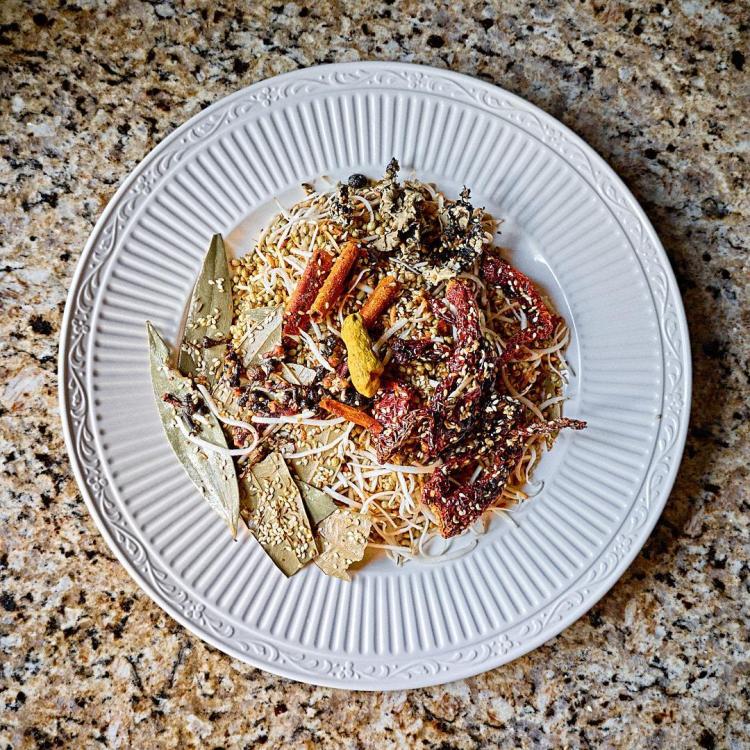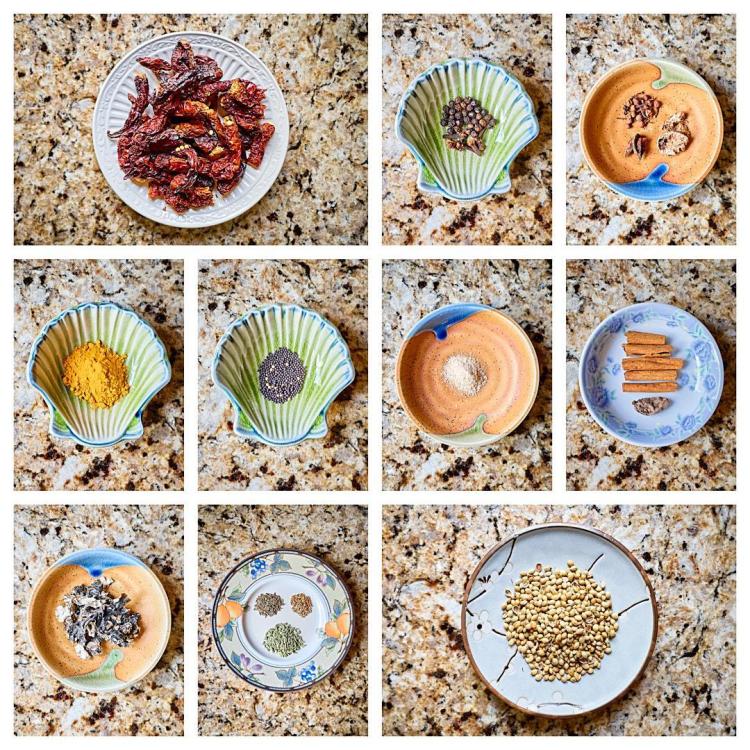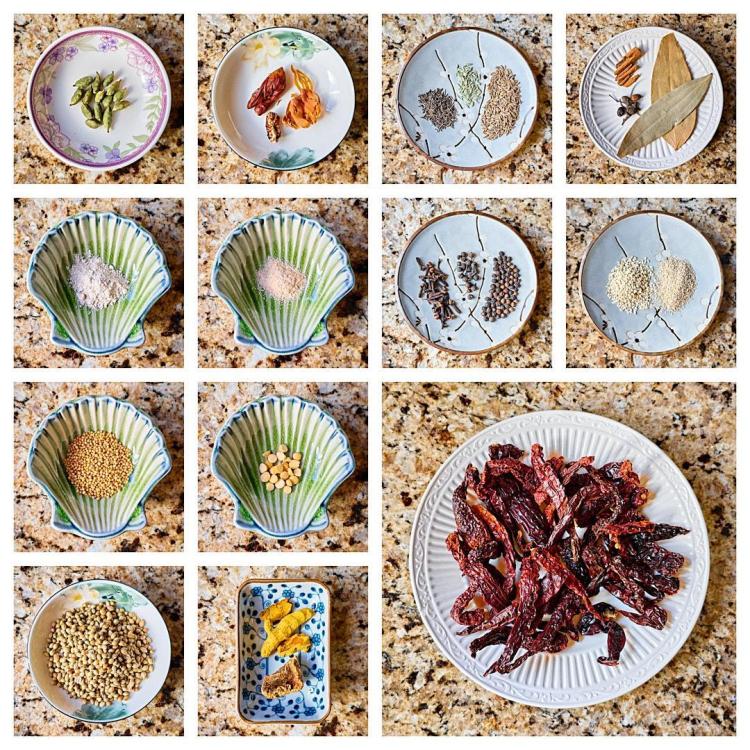
Tan Can Cook
legacy participant-
Posts
97 -
Joined
Content Type
Profiles
Forums
Store
Help Articles
Everything posted by Tan Can Cook
-
Five years late, from my experience, my family is lucky that there are a few farmers at our local Solano County (Northern California) Farmer's Market that grows, stocks, and sell Hibiscus sabdariffa var. rubra. Gongura is a local term in Telugu, which is the native language of Indian states Andhra Pradesh and Telangana. In the recipes books I have on regional Indian cuisine, the common English name—as you have indicated are—sorrel and roselle leaves. Gongura is widely accepted and understood. It's flowers can be candied with a sweet and sour taste, similar in texture to sweetened cranberries that you can easily buy at supermarkets here in the US.
- 1 reply
-
- 1
-

-
Aapka swagat hai, @daviddorkings ji. You had me at "Indian" food. You will find that this forum "a little quiet these days." However, I sometimes check in on occasion, e.g. today. Another eGullet member, who's seriously into Desi cuisine is none other than @Tempest63 ji, who resides in the UK. If you are interested in regional South Asian cuisine spanning present day India, Pakistan, Bangladesh, Burma, and Iran, I have made posts on cookery books, some spice mixes, herbs, and where to source them online. I am located here in Northern California. You'll find that I am super friendly and conversant, when it comes to foods spanning South Asian countries (only). Happy cooking and on behalf of the quiet members of eGullet, welcome and get used to the menus and sections. Also, if not already, please read some of the forum rules and guidelines. eGullet Moderators will strictly enforce the rules for the sake of the greater eGullet Community. I am certain Ms. Nancy Smith (@Smithy) will be more than happy to address any further questions and concerns.
-
Show us your latest cookbook acquisitions!
Tan Can Cook replied to a topic in Cookbooks & References
On goose recipes, I found the following from Alwan-E-Nemat (Translation: "Colors of the Table"): A Journey Through Jahangir's Kitchen by Salsa Yusuf Hussain. Please see attached recipe pages along with cover of the book. This is "time travel" cookbook from Persian scholar Salma-ji. From the introductions of her book, she translated the Persian (Farsi) manuscript and modernize the recipes via down scale, etc. Because the real recipes were in banquet-portion for guests of the Fourth Mughal Emperor Jahangir (23 July 1547 – 28 October 1627). Maybe one of these days, I'll brave and make it. I practically have almost every single ingredient in spice collection except the goose! -
Show us your latest cookbook acquisitions!
Tan Can Cook replied to a topic in Cookbooks & References
It's been awhile. Today the 15th July, I received Ammi's Kitchen: Heirloom Recipes from Rampur by Pernia Qureshi. The book came out in India in June 2025. I managed to pool together tips money from cooking for a few families I serve. It took 11 days transit. Book arrived immaculately perfect, complete absence of any cosmetic defects! Corners are sharp, you can poke an eye out! If it arrived with cosmetic damages, e.g noticeable rubbing or dents/dings, etc, I know Cold Books will exchange with a copy that meets my stringent specs. It is currently my 45th book in my collection of regional South Asian (Desi) cuisine. Most of my books are are purchased from Cold Books in NYC. They are aware of me as one of their loyal customers of repeated business going back to March 2023. 🙂 It is not yet released in the US. I think it will be available April 2026 for North America, UK, etc. If you're the US, indie seller "Cold Books" from NYC on Biblio book marketplace has a few copies already on US-soil. Please excuse the reflections; book is covered in Brodart mylar. -
I recently borrowed The Flavour of Spice by Marryam H. Reshii from my library. It contains insightly essays and anecdotes on some of the major spices in use and contains a few (limited) recipes which showcases those spices in action in a recipe. You can find the book and preview it inside Google Books to see if that is book you are after.
-
@TdeV, Flavours of the Spice Coast is a cookbook on Kerala cuisine. It doesn't contain information about specific spices and show to use them in example spice mixes/blends.
-
Yup. I am AI. I am being trained on this forum. :-)
-
I do taste my foods. I am not blindly measuring gram-accuracy ingredients and serving direct. Maybe I should have clearer. As for scramble egg comment. I don't have a typed up recipe for it. Try not to take my statements seriously. I am aware my style and tone to writing gives off that "robotic" impression. Other than that, I am methodical and consistent.
-
Obviously we each have our personal style at cooking. What I am saying is that, if there is a foundational basis (standardized) recipe for your family and assuming that you don't change products and brand you use, theoretically, when you cook from your own notes, you won't need to "taste test" as if you're cooking for the first time. For me, every single food item(s) I cook for my family or small jobs have a standardized recipe in my Google Docs folder with helpful hints and tips I wrote for myself for future use of that food item(s). Earlier in the year, I treated myself to an elaborate biryani. The ingredients I prepared are recorded in gram-accuracy so that if I feel like it, I can recreate that exact recipe this week...if I wanted to. The only ingredient I did not record to gram accuracy are garnishes like coriander and mint leaves. Cooking is a both a science and art. If you want to remain consistent even with yourself, you need to incorporate the scientific methods in your cooking. That means getting used to taking helpful notes and record it in recipe style format at seen in cookery books. I also never ever cook without a pre-written recipe typed up. Like you said, during the cooking process, whatever your mood fancies, I may change ingredients ad libitum—which are reflected in my notes. This kind of record keeping takes me back to my organic and biochemistry labs at uni. Even in our upper division undergraduate labs, we had to know in full details the experiment. We basically summarize our lab manual, which include steps and hand draw apparati setups. On the day, we can't use the manual and have to rely on our lab notebook to succeed the experiment. It is probably too much to some people. This is how I feel more natural way around my home kitchen and I feel this is how I learn, explore, and improve my cooking.
-
We have be kind towards ourselves and chalk it up to learning experiences. How are you keeping track? Do you keep a detailed recipe of notes? Although I have a super small (selective) clientele I serve, I cook for my elderly retired parents and younger brother. I keep detailed notes and measurements in the style of recipes as seen in books. When finished cooking, I ask my parents for feedback on seasoning and the heat (chillies) and spice levels. The feedback gets entered at the section as "Notes or Commentary." The next time the food is being cooked, I have all the measurements recorded via a weighing scales. I have two: one for large ingredients and the smaller one for spices with accuracy to 0.01 grams. Also, I feel you should never serve guest(s) food and cuisines you've never cooked before. They should never be your "guinea pig," especially if your guest(s) are close friends/colleagues or paying.
-
I still have and use my i1 unit from Xrite. It is still working after all these years.
-
I see you know your way around both your kitchen and your camera. Well done. I am assuming you fixed or corrected for (if any) white balancing issues, yes? Then again, my monitor is calibrated via a dedicated colorimeter.
-
Fantastic food picture. 🙂 Well done.
-
Goda (Kala) Masala from Essential Marathi Cookbook The original recipe yields 1.5 kg of Goda (Kala) Masala! Traditionally, families in Maharashtra make enormous batches and distribute them among family members or friends. The original recipe from Kaumudi Marathé was provided in grams, making it easy to scale down by a factor of 8 for convenient storage in recycled jam jars. In my small batch, I opted to use dried Byadagi red chilies from Karnataka and dried Kashmiri red chilies from Kashmir. They are mild in heat and provide vibrant color. In this masala blend, coriander, coconut, and sesame dominate. The color turns dark brown, which is why it’s called "kala" (Hindi: dark color or black). By Tan Can Cook Modified and Adapted from Kaumudi Marathé Ingredients [Reduced by Factor 8 ( Yields ~194 Grams)] 14.36 g virgin coconut oil 1.88 g Indian bay leaves 1.88 g black stone flower (Parmotrema perlatum) 31.125 g grated dried coconut 6.19 g dried Byadagi red chilies 6.19 g dried Kashmiri red chilies 6.38 g cumin seeds 3 g black cumin seeds [Elwendia persica] 43.875 g white sesame seeds 62.625 g coriander seeds 3 g cassia buds [Cinnamomum spp.] 2.625 g cloves 2.625 g cinnamon sticks 1.13 g black peppercorns 3 g asafoetida 2.625 g turmeric powder 1.88 g kosher (coarse) salt Method Gently heat ½ tbsp oil on a griddle. Toast each ingredient separately, except turmeric and salt, in the order listed above for 2-7 minutes each. Toast over medium heat, stirring frequently, till fragrant. Toast larger quantities in batches. Reheat griddle and oil as required. Put toasted ingredients in a large bowl. Powder them fine, in batches if needed. Mix in turmeric. Store goda (kala) masala in jars. To store masala long term, mix in coarse salt, closing the lid tightly, and store in refrigerator. This is not the same recipe for Goda (Kala) Masala from The Essential Marathi Cookbook, but if you search for the name on YouTube, you will find people in Maharashtra sharing their recipes and making it in gigantic portions. Here is an example video in Marathi: .
-
Hi Mr. Weinstein sir. @weinoo Great to bump into you here. All my spices and blends are laser-focused onto blends from India, Pakistan, Bangladesh, and Iran. I have about 40+ cookbooks that I am still trying to cook through. Here in eGullet, I have started to share some of these masale blends I've made and have presented in the form of mise-en-place collage. I consider myself a "masalchi" in training.
-
Spices and herbs! I know right. They somehow kept multiplying. Hehe. Variety is the spice of life. As they say. :-)
-
As someone who loves spices and herbs. I like your collection.
-
Maharashtrian Malvani Masala from The Konkan Cookbook By Tan Can Cook Modified and Adapted from Sanjeev Kapoor Ingredients (Half Quantity) 30 g dry Byadgi red chilies 9.25 g (2 tbsp) coriander seeds 0.50 g (6 to 7) cloves 1.63 g (½ tsp) black peppercorns 2.70 g (1 tsp) fennel seeds 0.75 g (¼ tsp) cumin seeds 1.00 g (¼ + ⅛ tsp) black cumin seeds [Elwendia persica] 1.00 g (1) black cardamom 4.50 g (5½-inch) cinnamon pieces 1.25 g (2¼ tsp) stone flower 0.40 g (¼ tsp) nagkesar [Mesua ferrea] 1.00 g (¼ + ⅛ tsp) black mustard seeds 4.00 g (1½ tsp) turmeric powder 1.00 g (¼ tsp) asafoetida 2.75 g (½ piece) nutmeg 0.50 g (½ piece) star anise Method Dry roast (on low-medium heat) all the ingredients one by one until fragrant. Cool & grind—allowing the roasted spices to cool completely. Grind them into a fine powder. Store and transfer to an airtight container and in a cool, dry, and dark place.
-
Bottle Masala from Essential Marathi Cookbook By Tan Can Cook Modified and Adapted from Kaumudi Marathé Ingredients (Quarter Quantity via Tan Can Cook) 25 g Byadgi dried red chilies 18.75 g Kashmiri dried red chilies 18.75 g coriander seeds 6.25 g turmeric powder 6.25 g mango ginger powder [Curcuma amada] 3 g poppy seeds 3 g white sesame seeds 3 g mustard seeds 3 g cumin seeds 3 g black peppercorns 1.75 g green cardamom 1.75 g cinnamon pieces 1.75 g cloves 1.75 g whole wheat flour 1.75 g split chickpeas (chana dal) 0.88 g black cumin seeds [Elwendia persica] 0.88 g Indian bay leaves 0.88 g cassia buds [Cinnamomum spp.] 0.88 g mace 0.88 g rampatri / maipatri [Myristica malabarica] 0.88 g cubeb pepper [Piper cubeba] 0.88 g asafoetida 0.25 g fennel seeds 0.65 g (⅛ piece) nutmeg Method Clean and dry ingredients separately (except nutmeg); roast them slowly on a hot dry griddle, till fragrant and crisp. Grind nutmeg fine. Place it in a large bowl. Grind chillies fine and add to the nutmeg. Separately grind or pound the other ingredients fine. Mix them with the powdered spices. Store in airtight containers and away from light.
-
Kolhapuri Masala from Essential Marathi Cookbook By Tan Can Cook Modified and Adapted from Kaumudi Marathé Ingredients (Half Quantity) 13 g (½″ piece) ginger 25 g garlic 13 g (½ small bunch) fresh coriander leaves, washed & dried ¼ cup coconut oil 25 g sesame seeds 12.5 g poppy seeds 62.5 g roasted dry coconut 5 g black peppercorns 30 g coriander seeds 10 g cumin seeds 1 (4″) piece cinnamon stick 5 cloves 2.5 g mace ⅛ piece nutmeg 2 Indian bay leaves ½ tsp black stone flower 1 nagkesar [Mesua ferrea] 1 cassia bud [Cinnamomum spp.] 1 green cardamom 1 black cardamom ¾ tsp turmeric powder ½ tsp fenugreek seeds ½ tsp black mustard seeds 2.5 g asafoetida 50 g dry Byadgi red chilies 1 tsp salt Method Grind ginger, garlic and coriander leaves to a paste without water. Gently heat ½ tbsp oil on a griddle. Toast sesame seeds for 3-5 minutes over medium heat. Re-oil the griddle. Toast poppyseeds for 3-5 minutes. Grind them together and set aside. Re-oil the griddle. Toast coconut for 3-7 minutes, till golden and fragrant. Powder it fine. Toast the remaining ingredients separately over medium heat, in the order given, except turmeric powder (if used), chilli powder and salt. Toast each ingredient for 2-7 minutes, on a lightly oiled griddle, oiling and reheating griddle as required. Finely grind each ingredient separately. Place in a large bowl. Combine them with garlic paste, coconut, turmeric powder (if used), chilli powder and salt. Mix well, sifting the masala through your fingers to break up lumps. Store immediately in airtight containers. Note: Wash your hands well after mixing the blend.
-
Even for me, "locally" is 36.5 km round trip to another nearby city. I started supporting and using that Indian store, because my default (going regularly since 2020) changed ownership and let's just say—quality and customer service went out the window. I vote with my wallet. Between my original default and new Indian grocery is about 2.7 km apart. They're really close, just a few blocks in opposite directions. I tell everyone to simply use (purchase) the imported Indian brands, because those are the same brands widely used by the Indians in India. That's why all of my spices are Indian brands (with offices and branches here in the US), e.g. Deep, Santos, Laxmi, Hans, HB, Guru, etc. Can you find Dabur or Tez locally? Those are popular brands in India amongst others. Make sure to check for kachi ghani (cold pressed) on labels.
-
I am similar to you. I can't stand shrimp, lobster, crab, or any of them in the similar genus. Mind you, I am in my 40s. As long as I could remember, this was always the case. I am not-at-all allergic to them either. Their smell, their texture, is simply weird to me and almost always provokes my gag reflex. The "funny" (haha!) thing is that if shrimp is ground and mixed in with other ingredients, e.g. like in Vietnamese egg rolls, I will eat them knowing there is shrimp inside. Because—I can't taste the shrimp. I can't smell the shrimp. They are well masked!
-
Shrimp, lobster, and any of them in the same genus. Same goes for clam, oysters, etc. Even for chicken, I can't stand steamed chicken. Nope. Fish has to be fried (cooked) with spices so that fish no longer smells "fishy." Years ago, my uncle hosted splurged on a super fancy Chinese New Year celebration in San Francisco. It was a huge family gathering. He rented out the banquet room. Because I was taught to eat little bit even though I don't like it, I remember consuming sea abalone was not-at-all a pleasant experience!!! I didn't even bother chewing and swallowed fast. I am sorry, but not sorry. Sea abalone tasted nasty with the capital-N.
-
I looked up "safe" or "USDA certified" "mustard oil for cooking" on the USA Amazon store and they are costly. Costs for the same volume cost 24.99 USD. There is one brand called Yandilla and cost a whopping 39.95 USD for 16.9 fl oz! This is "cold pressed" from Australia. Not only is this half the volume, but 5 times the price! My Dabur-brand of cold pressed (kachi ghani) locally cost 7.99 USD for 1 L (34 fl oz). Dabur is a famous and large brand in India. I myself only use my bottle when I cook foods from Bihar, Bengali food, etc. I am not using this oil every day. It's specialized oil for me.
-
You're going to be busy @Tempest63 ji. Happy cooking! Based on my understanding of Marathi spice mixes, they are not at all floral (aromatic) dominant. Sure, it "smells nice" and "pleasing." It should be ground chili dominant followed by cumin, coriander smells. We both have Essential Marathi Cookbook by Shrimati Kaumudi Marathé ji. The recipe was given in grams. Just on this, you get an idea of the percentage composition ratio. In my small batch in a glass jar I shared earlier, I smell peppery from black peppercorns and cubeb berries. I like using Kolhapuri Masala. I sprinkle some of roasted cauliflower or asparagus just to give the flavors an elevated boost.

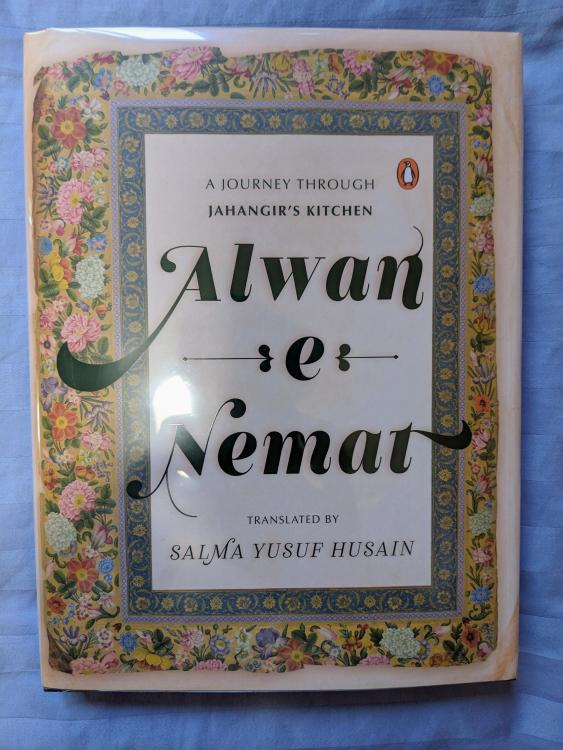
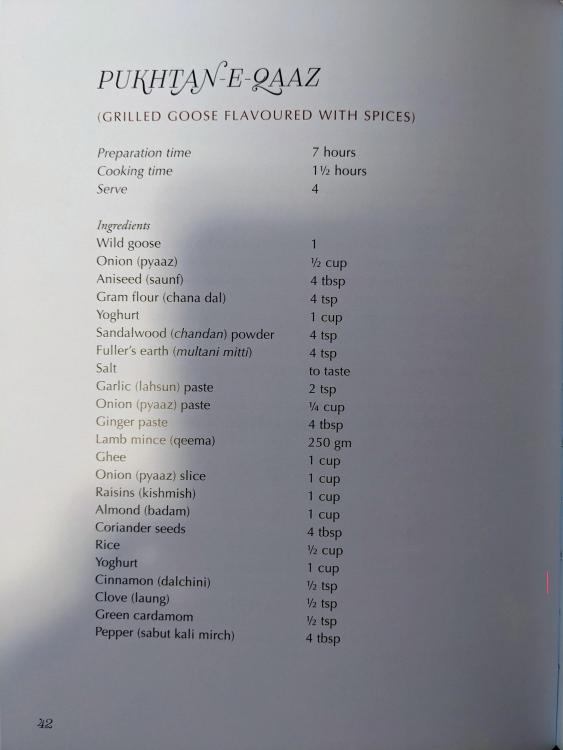
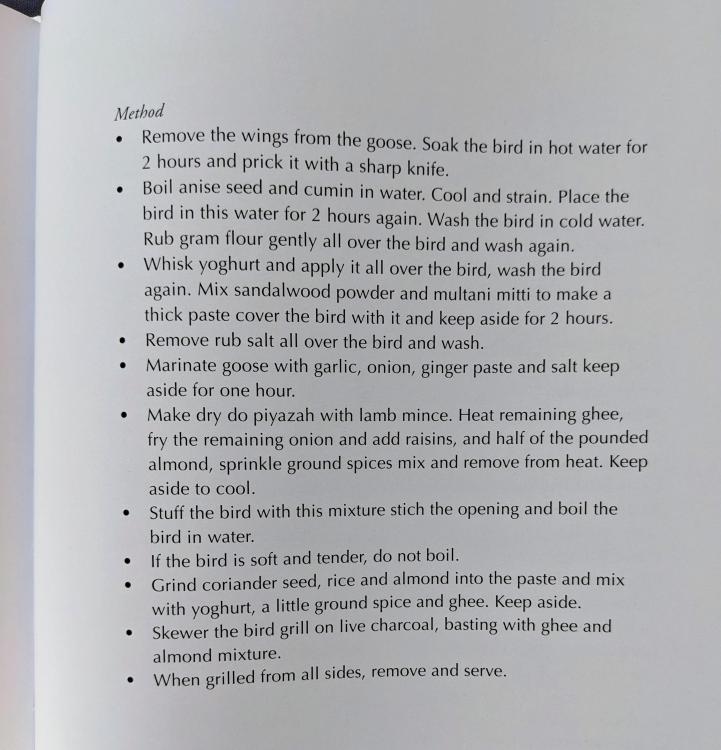

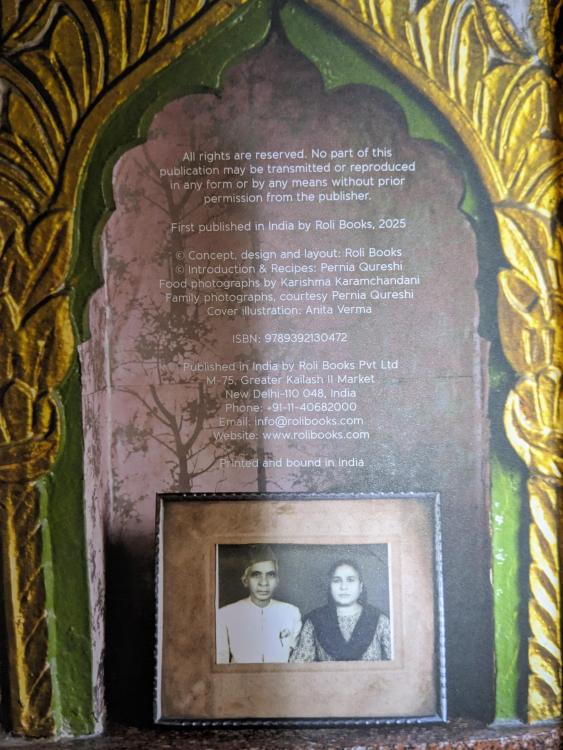
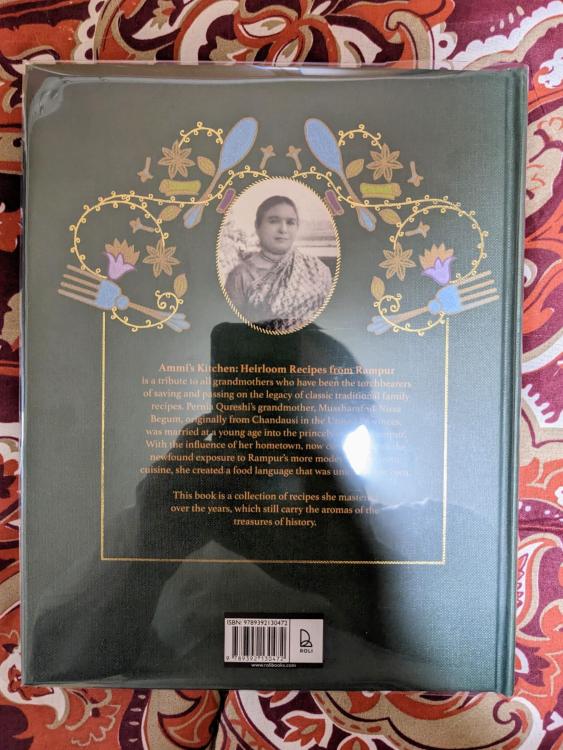


MasalafromEssentialMarathiCookbook.thumb.jpg.cf7a7baf410426d8811900a872c21159.jpg)
